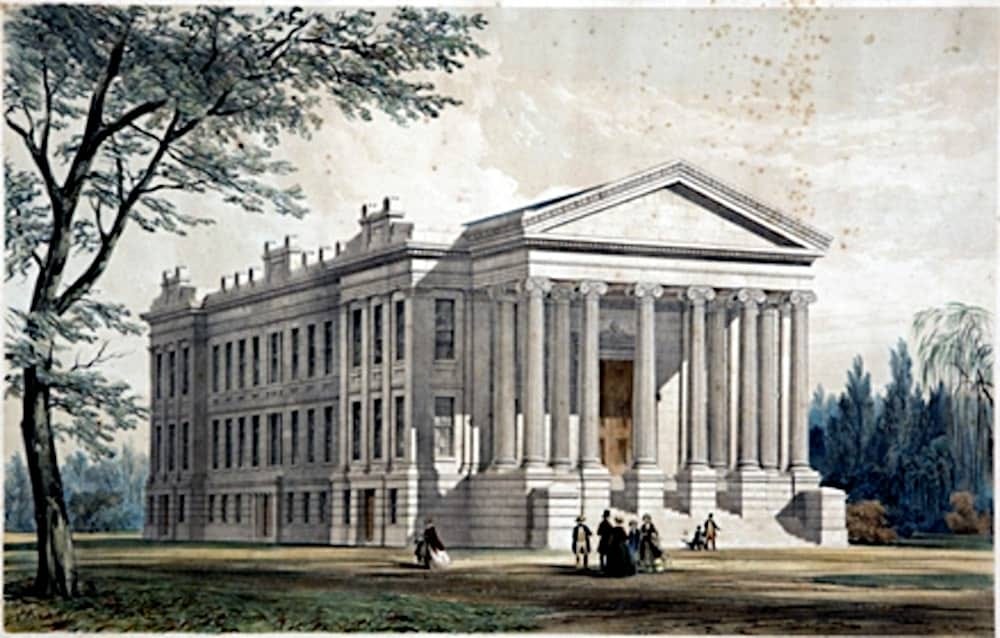Illustration of Municipal Hall, New Orleans, by Thomas Kelah (T.K.) Wharton, 1848. The building, designed by renowned architect James Gallier, was built from 1845-1853. The city long desired to move its municipal offices out of the Cabildo, the Spanish Colonial government building at Jackson Square. This building was dedicated on May 10, 1853.
There's an interesting note in the Commons attached to the lithograph: "Note: Artist has depicted the building as if isolated in rural setting rather than in the city." This explains why there's nothing around the building. While I haven't found a note or explanation from Wharton, it makes sense, if you want to present the building as more than just a front elevation.
Off on a tangent: When I was writing my book on Krauss Department Store, articles written after Terminal Station (the Southern Railway railroad terminal next to the store) was demolished mention how large the store was. The railroad terminal masked the store beyond the original building and first expansion.
So, this building was the focal point of city government for almost a century. As such, it saw a number of major events, including the occupation of New Orleans by Butler and Farragut in 1862. After World War II, the city desired a larger, modern headquarters. So, municipal government moved into a new City Hall, at Duncan Plaza on Loyola Avenue, in 1951.
With this move, the "old city hall" was re-named, "Gallier Hall." The building's location on St. Charles Avenue, across from Lafayette Square, allowed it to continue as the ceremonial nexus for the city. Mayors receive the monarchs of Carnival parades at Gallier hall, as they roll along St. Charles.
On a daily basis, Gallier Hall is home to the Ty Tracy Theater, managed by the New Orleans Recreation Department. It's available for rental as a meeting and reception facility. During its five-season run, the television show "NCIS: New Orleans" used Gallier Hall as the fictional city hall. That made for great shots of characters from the show meeting with city officials in the building, as well as across the street in Lafayette Square. Those scenes really showed off the splendid Greek Revival design of the building. Gallier Hall is also the setting for the splendid "Luna Fete" light show.
Four Ways to Support NOLA History Guy
Buy my books! Edward Branley is the author of six books on New Orleans history. They're available from local booksellers and all the usual online suspects.
Book NOLA History Guy to speak at your event - Edward speaks to groups ranging in size to local groups like Kiwanis and Rotary to major conventions and trade shows.
Buy me a coffee on Ko-fi dot com. I just love this concept as a way to say thank you/tip creators you enjoy. Our idea of monetization is buying books and having us come to speak. If you see me at a coffee shop, stop and say hi. Otherwise, I'll raise coffee cup to you if you treat me.
Become a patron. Yes, we're on Patreon. A lot of creators use the platform for direct monetization, and that's great for them. We don't have "exclusive content" for patrons. Still, if you think our history stuff is worth a dollar a month, go join!




